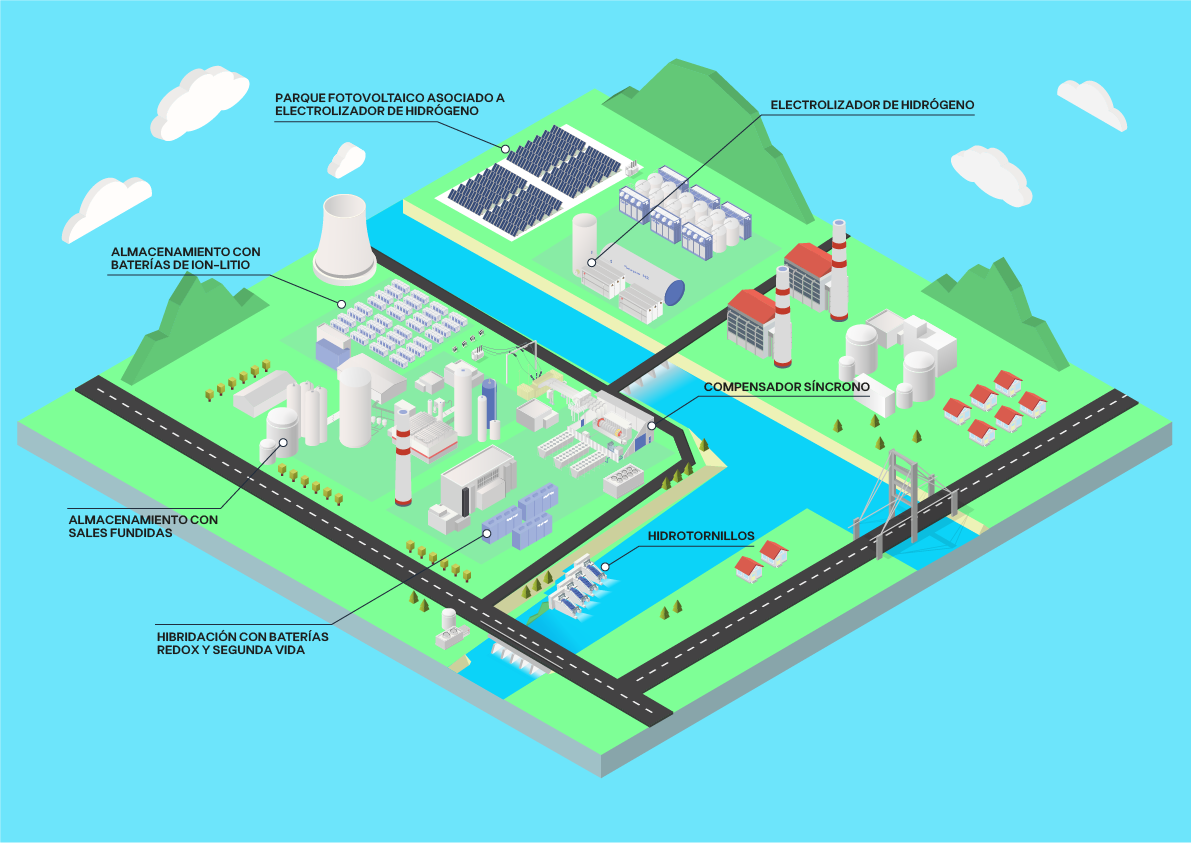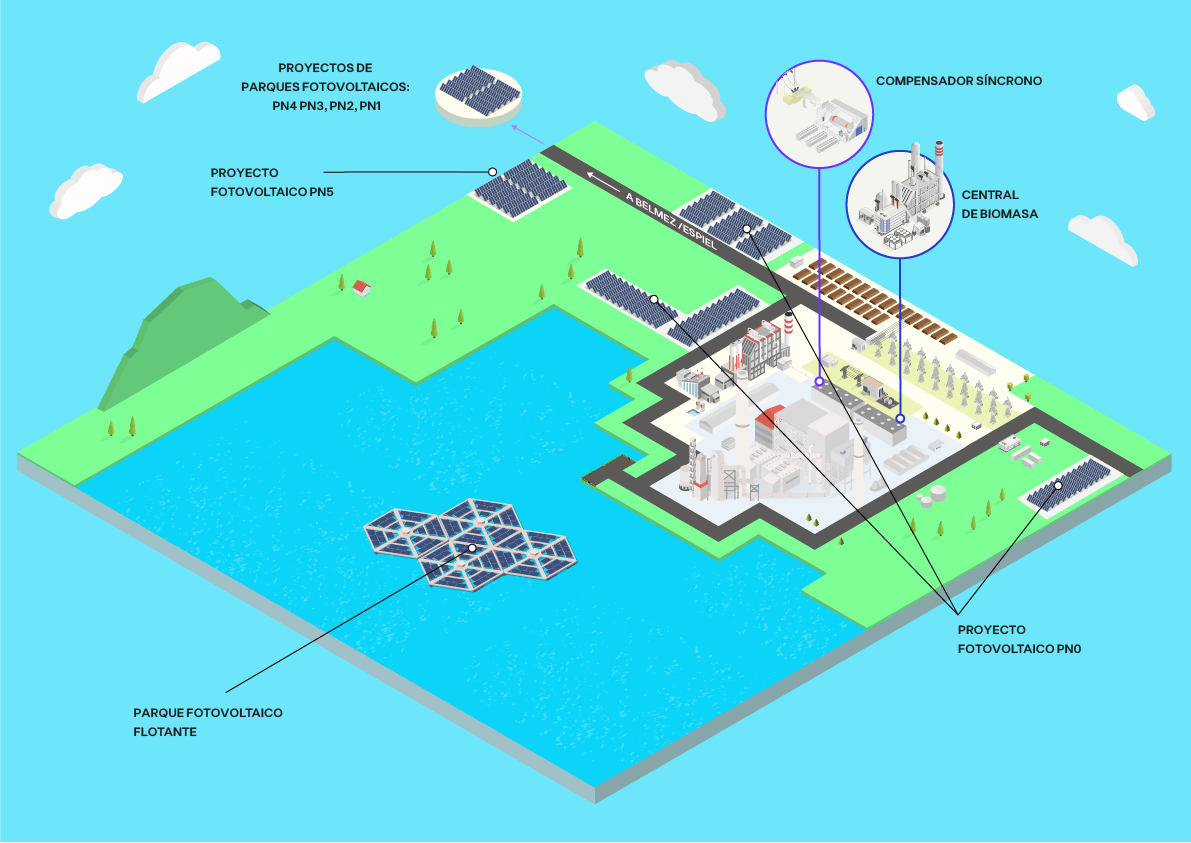EDP accelerates the energy transition. The company, which has the ambition to be 100% green by 2030, announces major projects to transform its power plants in Spain.
Aboño, Asturias' green hydrogen valley
For almost 50 years, the Aboño thermal power station has been a guarantee for the stability of the electricity supply to Asturian industry. EDP plans to maintain this role in the energy transition.
The company, which has announced that it will stop producing with coal in 2025, plans to convert this strategic site into the Asturian valley of green hydrogen. The facility's technical and market know-how and privileged geographical location would guarantee the production and supply of the electricity and green hydrogen needed by Asturian industry in its manufacturing processes.
EDP is contemplating the start-up of a photovoltaic farm at the current Aboño facilities, which, together with the floating offshore wind farm the company is planning on the Asturian coast and the easy access to water, electricity infrastructures and the port of El Musel, will enable the necessary production and storage of green hydrogen to be carried out at Aboño.
This green hydrogen could also replace the fossil fuels currently used to support the energy use of steel gases, a waste that would otherwise be burned in a flares and emitted directly into the atmosphere. Green hydrogen would maintain this condition of circular economy and revalorisation.

Soto de Ribera, the green battery of Asturias
EDP's plans for Soto de Ribera also include renewable energies. The company could turn this site into a reference centre for renewable energy storage and new uses for green hydrogen.
As far as renewable generation is concerned, EDP has already begun processing a mini-hydro plant with hydro-screws that would take advantage of the waters of the Nalón river as it passes through the plant. This installation will be added to a photovoltaic park that the company plans to start up on the site.
The renewable energy generated by both facilities would be fed into the grid to meet demand, would allow green hydrogen to be produced and stored, and the surplus would be stored in two types of batteries: lithium-ion batteries and a combination of RedOx and second-life batteries (for example, vehicle batteries).
EDP is also working on various other projects to store liquid air to generate electricity.
As for new uses for green hydrogen, the company is planning different projects. It plans to build a hydrogen plant - a hydrogen filling station - with the aim of contributing to the decarbonisation of passenger and goods transport; it will promote the decarbonisation of surrounding industries; and it will conduct tests on combined cycle plants in a scenario that would facilitate the substitution of the natural gas currently used by green hydrogen.

Central de los Barrios: the hydrogen valley of the Bay of Algeciras
The Los Barrios coal-fired power station is a potential site for the development of hydrogen projects, the reconversion of which would enable the supply of green energy for the entire industrial environment of the Campo de Gibraltar and possible export by sea. Collaboration with the administration could launch a hydrogen hub in Campo de Gibraltar to supply nearby industries. It also envisages a 255 MW energy storage project with lithium-ion batteries.

Puente Nuevo power plant: the green energy of Cordoba
Several renewable energy projects and an industrial project are planned for the Puente Nuevo coal-fired power plant. EDP wants to generate wealth and revitalise industrial activity in the region with the conversion of this plant.
The company plans to deploy several photovoltaic power plants in the area with a total capacity of 300 MW. The project also includes the installation of a further 50 MW of floating photovoltaic power on the reservoir. To preserve this site, other projects will be added, such as a collaboration for the production of copper, and a biomass plant that will revitalise the environment.
